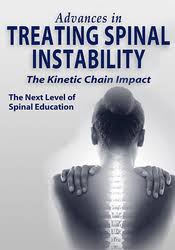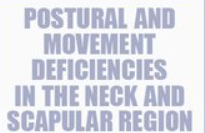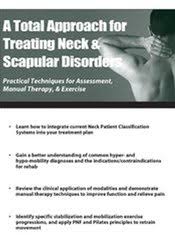🎁 Exclusive Discount Just for You!
Today only: Get 30% OFF this course. Use code MYDEAL30 at checkout. Don’t miss out!
Learn about the impact of muscle imbalances and movement on pain and dysfunction in Gait, posture, functional movement analysis and simple clinical tests can assess the spine and lower extremities.
Sue DuPont – Advances in Treating Spinal Instability

BACK PAIN: WHY IT’S A PROBLEM
- Biotensegrity is The Anti-Gravity Model
- Role of The “Core” Are you looking for stiffness or movement
- Myofascial connections: Their role in Stabilization and function
LAB #1 — MYOFASCIAL MOBILIZATIONS
BACK PAIN: ARE YOU CHASING THE PAIN??
- Functional vs. structural pathology
- The effects of force and sustained positions
- Effects of chronic pain, dysfunction and movement
What is SPINAL INSTABILITY?
- Ambiguity of term Spinal instability
- Disconnect between medical diagnosis, clinical signs and symptom and medical treatment
- Historical perspective on spinal instability
- Muscle dysfunction and lumbar spine instability
- Functional vs. pathological muscular imbalances
- Muscle imbalances can be treated with rehab
KINETIC CHAIN REHAB – FUNCTIONAL MOVEMENT
- Principles of Kinetic Chain Rehabilitation
- Functional coupling between muscles & fascia
- Components that allow for optimal functional movement
- Common dysfunctions and myofascial slings
- Biomechanical link between spinal instability and lower kinetic chain
SPINAL INSTABILITY IS NOT JUST STIFFNESS.
- Dynamic vs. static spinal instability
- Effects of force vectors and muscles on synergist, antagonist, and agonist effects
WHERE ARE NOW WE?
- Motor control vs. general exercise
- Clinical prediction rules to predict back pain
- Influence of body type and posture
- Muscle sling dysfunctions “Gluteal Amnesia,” Quadratus Lumborum Syndrome, etc.
- The importance of dynamic functional movement analysis
LAB #2 – POSTURE, ROM, & MUSCLE LENGTH
SPINAL INSTABILITY: CLINICAL PRESENTATION & OBSERVATIONS
- Patient case studies
- Find myofascial imbalances, and find compensatory patterns
- The best clinical tests for spinal instability
- Clinical “pearls” for determining weak quadrant
LAB #3 — DYNAMIC FUNCTIONAL MOVEMENT OBSERVATIONS & CLINICAL ANALYSIS
CORRECTIVE EXERCISE PROGRESSIONS TO SPINAL INSTABILITY
- Motor control of local stabilizers
- Triplication-planar stabilization
- Now, focus on your gluteal muscles
- Progression Spinal Exercises in Stabilization
- Evidence from EMG-Guided Progressions
- Add equipment or unlevel surfaces
- 5 Functional tasks to ALWAYS include
LAB #4 — PRACTICE CORRECTIVE EXERCISE PROGRESSIONS LIVE CASE STUDY
- Develop a treatment plan.
- Myofascial sling dysfunction, spinal instability
RESOLUTION
Would you like a gift? Sue DuPont – Advances in Treating Spinal Instability ?
Description:
The Next Level of Spinal Education
Nearly 80% will suffer from Low Back Pain (LBP). They should seek treatment. in outpatient clinics. The evidence has not been conclusive regarding the best treatments, especially for spinal stabilization programs. New research using electromyography (EMG), however, has improved our understanding of functional movement, muscle imbalances and ineffective load transfer through spinal stabilization programs.-pelvic-The risk of injury to the hip complex and lower kinetic chain is increased by the hip complex.
Learn about the impact of muscle imbalances and movement on pain and dysfunction in Gait, posture, functional movement analysis and simple clinical tests can be used to evaluate the spine and lower extremities. Identify true lumbar instability, myofascial sling, and joint dysfunctions that may be contributing to your patient’s pain. Find the latest clinical prediction guidelines for LBP to help guide your treatment planning. Incorporate manual therapy, stabilization, exercise and acupuncture into your treatment.
With interactive hands, you can take core, balance, proprioceptive and core training to the next stage.-on lab — learn manual techniques to rebalance tissue dysfunctions and how to develop an effective corrective exercise program utilizing inexpensive equipment such as foam rollers. You will achieve better results if you focus your efforts. in less time — and you and your patient will have fun in The process!
Course Features
- Lectures 0
- Quizzes 0
- Duration Lifetime access
- Skill level All levels
- Language English
- Students 0
- Assessments Yes


